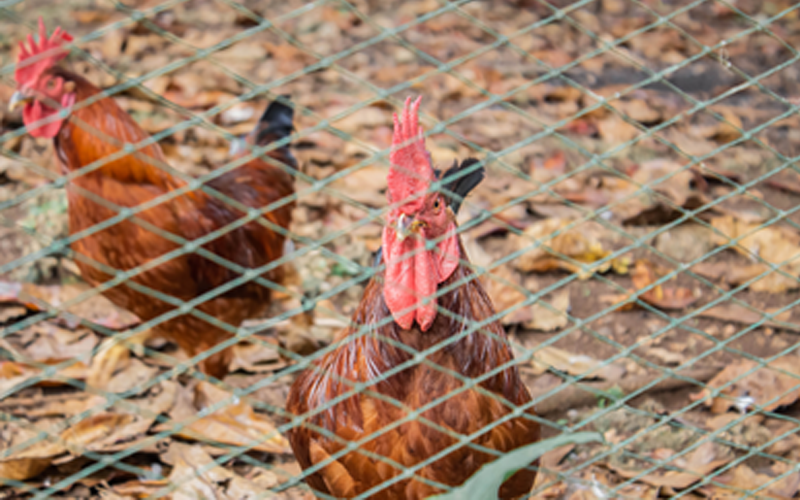
TAGBILARAN CITY, Bohol (PIA) — Tourists to Bohol may soon find a Bohol-branded native chicken meat served in food outlets here, an experience that would equal to the experience of Kobi beef for tourists to Japan.
This as an academe-based research and development aiming to bring back the native “manok Boholano” has shown promising results, according to Provincial Veterinarian Dr Stella Marie Lapiz, during the launching of the Department of Science and Technology’s (DOST) virtual Farm and Industry Encounters through Science and Technology Agenda (FIESTA) and Exhibits April 12.
It was the Department of Science and Technology-Philippine Council for Agriculture, Aquatic and Natural Resources Research and Development (DOST-PCAARRD) that has seen the potential for development of the native chicken considering how people resorted to it during the pandemic and how putting up future research and development could lend to the sector the scratching and pecking way to improved farmer’s lives, explains organizers during the virtual launch.
The PCAARRD partnered with research consortia of Western Visayas, Central Visayas and Wesrn Mindanao for the simultaneous continued studies on the darag chicken of Iloilo, Boholano chicken and ZamPen chicken of the Zamboanga Peninsula.
This is in the hope of promoting the native chicken production, sharing new technologies and its research breakthroughs while enhancing the local breeds.
In Central Visayas, the research consortium led by Bohol Island State University under president Dr. Regucivilia Pobar, partnered with the Office of the Provincial veterinarian, which had been pioneering the development studies of the native Boholano chicken, which has been tested to easily adapt to local environment, has high stress tolerance, adapts to low quality feed materials and is able to survive in free range and reproduces with minimal care and management.
The native manok sano is a development from the sturdier highly adaptable native breeds, the resultant Boholano chicken now has a distinctly unique palatable flavor, has aromatic attributes and shows a high degree of leanness and texture, according to Dr. Lapiz.
Meanwhile, compared to commercially produced eggs, the eggs of the native chicken is a better option as it contains only a third of the cholesterol a quarter of the saturated fat, contains 40% more vitamins A, E and higher amounts of omega 3.
In Bohol, while the inventory of live native chicken is high, according to the veterinarians, supply in the market is hard to come by, possibly because there is no established trading system and without an established dressing plant, issues on food safety could hinder its marketability, as to the recent studies here.
But recently picked as a priority agricultural commodity in Bohol, based on the criteria of suitability, market potential, inclusiveness potential and its potential to reduce poverty, authorities embarked on a value chain analysis to make identify areas of development and support as well as present to potential growers the business viability of native chicken especially in tourist and local support markets.
The value chain analysis allowed local authorities to formulate the native chicken investment plan, which allows the government to base its funding support and interventions to the development and for growers to possibly access capital for their potential entrepreneurship ventures.
In Bohol, the OPV has gone into social mobilization as the initial component in commercialization of the manok sano, or the Boholano chicken.
With already about 30 native chicken grower associations in the Bohol Native Chicken Growers Association, the OPV has gone into production support which included ‘native chicken village’ development with 15 cluster cooperatives federation manning the facility projected to produce an average of 4,000 heads per month, the establishment of 22 operational municipal native chicken breeder facilities, a customized feed ration production as feeds resource development and production inputs provision like polynets, breeder stocks and incubators while technical support is given free, sums Dr. Lapiz. (rahc/PIA-7/Bohol)



